What to feed a baby grackle bird
Crackle the Grackle - Life with Moore Babies
I will preface our story with, most baby birds cared for by inexperienced humans die. If you find a baby bird and have access to a wildlife center seek help. Read to the end to see how to identify if a baby bird is one in need of help!
We Found a Baby Bird
One Monday, I happened upon a baby bird. My infant son and I were out for a walk when I looked down and noticed the little bird right next to a tree near the sidewalk. I could not see a nest anywhere, so putting it back was not an option.
At the time I decided to leave it and come check on it later.
After our walk, it was still there.
I could hear mom calling from a tree in the yard, but I never saw her come down. Again I left thinking maybe it would still be taken care of.
| When I found him Monday. |
When I went back with my camera, who could resist the opportunity to get pictures, things got interesting.
I made a clicking sound to try to get it to turn its head towards me. It did; mouth open.
The poor thing was hungry.
| Hungry. |
Well, me being me couldn't let it starve. I knew most baby birds die, but I thought I should do something.
How We Fed the Baby Bird
After some research, I found a baby bird food recipe:
- 60% moistened kitten food
- 20% hard boiled egg (with the shell ground up for calcium)
- 20% meal worms.
On hand, I had hairball control, light cat food and egg, so I prepared a mix of hard boiled egg and moistened cat food in my magic bullet, found a pair of the girls plastic, toy tweezers, and went out to feed the bird.
He ate surprisingly well; I think he really was hungry. I didn't want to bring him in just in case mama bird decided to feed him, but I couldn't leave him next to the sidewalk where people walk their dogs.
I found a shoe box and made a little nest from paper towels. I placed him in it, and placed it under the tree mama bird was in.
Since birds have a poor sense of smell, the idea that he would be rejected after being handled wasn't really an issue. That just doesn't happen with birds.
I went out again just after dark, but at that time he wasn't hungry. It was at this point I realized birds don't eat at night. Awesome! I was worried I would be up every hour at night!
| He has food all over his beak; feeding him was not really a clean process. |
The next morning he was still in his box, and he was hungry!
I fed him every hour making that same clicking noise to get him to open his mouth.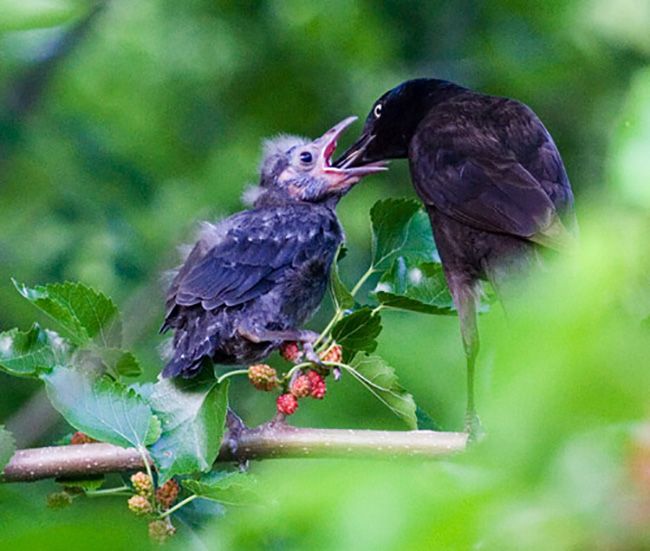 I never saw mama bird come to him at all.
I never saw mama bird come to him at all.
More research over the next week was needed to figure out what kind he was and how old he was. As his feathers unfurled I could see they were all black, so at first, I figured he was a black bird.
Well he was a black bird if you were just describing color, but most blackbird babies have brown feathers.
Further research revealed he was a Common Grackle, those sleek black birds with the shiny greenish heads.
As far as age it was only a guess at this point. I knew he was still a nestling as he did not have all his feathers and could not walk or hop. I was guessing around 8 days old based on other images I found online. This proved to be fairly close based on when he started hopping and flying.
| Tuesday Morning. (~9 days old) |
Wednesday Morning.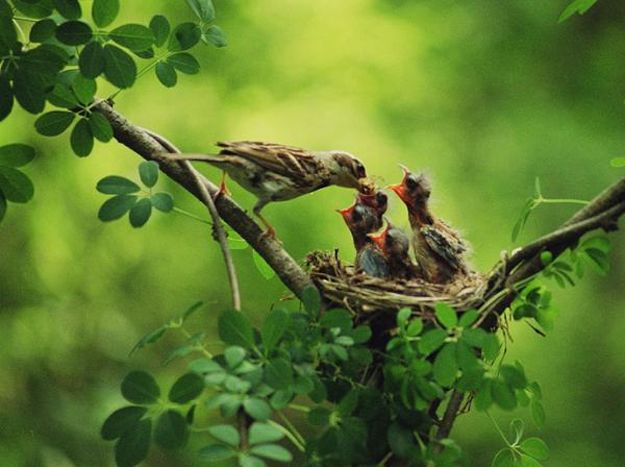 (~10 days old) (~10 days old)You can see his feathers unfurling a bit. |
I continued feeding him under that tree every hour during daylight until Thursday. I'm not sure how no one had picked him up between Monday and Thursday, but he was still there.
The Baby Bird Comes in the House
I went out around 5:30 am Thursday morning, and it was starting to sprinkle. He had no protection from the weather in his box, so I brought him in and stuck him and his box in a cat carrier.
| Thursday Morning. (~11 days old) |
My kids had been oblivious to him until that evening. They were excited when they saw him. They even started carrying around their own babies that had fallen out of a nest. The oldest had a blue jay and the younger a pegasus (it has wings at least).
| Thursday evening when the girls found him. |
Friday he went to work with me and was perfectly content to sit in the cat carrier on my desk. Sure, everyone, there may have thought I was a bit crazy, but I am pretty sure they already knew that.
And I couldn't just not feed him an entire day! You do what you have to.
| Friday Morning. (~12 days old) Standing a little more upright. |
Saturday started to get interesting.
He was certainly beginning to look like a bird as well as act like a bird. He started trying to get away when I would feed him.
That evening he started hopping a bit, so I decided it was time for a new cage. We took 2 laundry baskets and put them one on top of the other. We secured it with pipe cleaners and added branches for perches. I added a small nest, but at that point he really wasn't staying in it.
We secured it with pipe cleaners and added branches for perches. I added a small nest, but at that point he really wasn't staying in it.
| Start of a new cage. |
My older daughter even wrapped a stick around pipe cleaners to make him a "comfy branch."
| Finished cage with perches. |
| In the new nest, but not for long. |
| Eating on a perch. (~13 days old) |
We have a Fledgling
Sunday morning there was no doubt, we had a fledgling.
I woke up to him on the highest perch in his cage, and when I opened it he just held on and rotated his whole body to stay on that perch.
| Sunday morning on a perch. (~14 days old) |
I placed the open laundry basket outside, and my husband put up chicken wire to try and keep track of him.
He kept trying to hop and fly away!
| Sunday morning trying to fly away. |
He wasn't eating on his own, so he had to stay put a while longer. Much to our dismay, he did climb the chicken wire a few times that day.
We were also able to find a couple worms for him to eat. I do have to say that tweezers are not good for holding wiggly worms and trying to shove them down a baby bird. He wanted to eat them, but they just kept squirming away.
In the end, my husband had to give him worm pieces.
| Nathan's chicken wire fence. |
Monday he went back to work with me. After trying to fly away in the office he got stuck in a cage (luckily, we have those at a vet clinic).
I gave him some perches, and he seemed content to hop around in there for the day. I figured at this point it may also be safe to name him (I hadn't wanted to if he was just going to die like so many baby birds).
So I called him Crackle.
Monday morning; really looking like a bird. (~15 days old) (~15 days old) |
Tuesday he was back outside, but it was pretty hot for him in the sun. He kept escaping the pen for the shade of the lilies along the garage. So I put the girls little umbrella up for him.
Surprisingly he was content to stay right in the shade of the umbrella. As the shade moved so did he.
He was starting to peck a bit at water, so I was hoping he would be eating on his own soon.
I did end up buying him some meal worms Tuesday evening because I thought they may be easier to get down him then earthworms.
Spoiled bird with an umbrella. |
| Tuesday afternoon in the shade of the umbrella. (~16 days old) |
Wednesday he had the umbrella again. Each time he left the pen he seemed to go further, but he always answered when I called to him.
He was only taking food from me every other hour or so, and he seemed to be eating some of what I had left in his pen.
| Wednesday morning pecking at some food. (~17 days old) |
Wednesday evening I couldn't find him. I went out three times a walked around our yard and the yards on either side clicking at him.
Finally, I found him sitting on our neighbor's truck tire.
He made the mistake of jumping on Eli. I grabbed him just in time! I grabbed him just in time! |
The Beginning of the End of our Bird Raising
Thursday morning I went to feed him around 6 am, and he wasn't too hungry. So I opened his laundry basket.
| Thursday Morning. (~18 days old) |
| See his short tail; definitely a fledgling. |
I came back around 7 am to him stuck in a tree by the garage.
| In a tree. |
I called to him, and he called back, but he kept moving higher.
| And heading higher. |
He finally moved more to the center of the tree where I thought I could reach him, so up I went. I was able to get him down this time.
I was able to get him down this time.
Every time I went out he was someplace new. I could always find him though. He was eating more on his own and flying a lot more.
I went out Thursday evening around 6 pm to feed him before dinner. He didn't eat much at all, and then the next time I went out he was gone.
I figured he was hiding for the night, and although I tried to find him I couldn't.
The next morning his food had been pecked at, but he was nowhere to be found.
Halfway through the day, there was no more food.
We added more, and it too disappeared.
I would walk around clicking for him, and I could hear him but never see him. It always sounded like he was way up in our neighbor's tree.
Fully Fledged and on His Own
By Sunday he wasn't pecking at his food anymore, but sometimes I can still get him to call back to me.
I just have to assume he is doing fine on his own, and it was time for him to leave. Having never raised a bird I really wasn't sure what would happen.
Having never raised a bird I really wasn't sure what would happen.
We put up a bird feeder out in hope that he would come down to it.
| Our Bird Feeder. Grackles like to feed from the ground, but all the other birds seem to throw enough seed down there to keep them happy. |
They change so quickly, that I doubt I could ever recognize him.
| Adult Common Grackle |
I am pleased with this outcome even if I don't see him again.
What to do if You Find a Baby Bird
With wildlife, the goal should always be to return them to the wild. If you come across a baby bird, I do not recommend attempting to feed it.
Most baby birds you see are fledglings anyhow and the mother is still caring for them. If it is well feathered and hopping around it is a fledgling.
If it is well feathered and hopping around it is a fledgling.
Fledglings do not go back to the nest once they leave. The mother simply follows them around and feeds them on the ground until they can fly. We were actually able to watch this with a fledgling robin in our yard. Mom just found worms and followed it around giving it worms.
| Fledgling Robin on a gate. Notice the short tail characteristic of a fledgling. |
If it does not have all its feathers, cannot hop, or even doesn't have its eyes open it is a nestling and really should be returned to the nest if possible.
If it is not possible it should be taken to a wildlife rehabilitation center (if you have one nearby) as it takes a lot of diligence to even have a chance at keeping one of these little guys alive. I think Crackle and I were both lucky things worked out so well for us.
What Do Grackles Eat? (All You Need To Know)
What is a grackles favorite food?
How do grackles find food and hunt?
What time of day do grackles feed?
What do grackles eat in the grass?
What do grackles eat in the winter?
What do baby grackles eat?
What can I feed a grackle?
What do grackles not eat?
What do grackles drink?
Do grackles feed from bird feeders?
Are grackles good birds to have around?
Grackle Diet FAQs
Grackles are a member of the blackbird family and are common across the eastern and midwestern United States. You can identify these loud, gregarious birds by their beautiful iridescent plumage. They are opportunists and, thus, are well adapted to living around humans. So, what do grackles eat?
The common grackle is not a picky eater. They mainly eat seeds, including sunflower seeds, acorns, and sweetgum. However, they will also enjoy the fruits of wild and cultivated shrubs, grains like wheat and corn, and occasionally garbage.
More than twenty-five percent of the grackles diet includes insects, amphibians, fish, mammals, and other birds. Seemingly everything is on the menu for these wily avians.
Read on to learn more about their diet and other fascinating habits!
Common Grackle eating fruit from a cherry tree
What is a grackles favorite food?
Generally speaking, a grackle’s favorite food is insects. These birds are natural ground foragers. They will commonly strut through yards and fields feasting on insects, including beetles, caterpillars, grasshoppers, and grubs - many of which are harmful to your crops or gardens.
Grackles are omnivores. They also commonly eat a variety of seeds, grains, berries, and small animals - such as mice and other birds.
Our recommendation
Wagner's Cracked Corn & Wild Bird Food
Check price on AmazonHow do grackles find food and hunt?
The common grackle mostly hunts and finds food by ground foraging. It uses its long bill, rather than its feet, to search for meals in the grass. These birds will also search for food off the ground. You can find flocks or individuals foraging among trees and shrubs or visiting bird feeders.
It uses its long bill, rather than its feet, to search for meals in the grass. These birds will also search for food off the ground. You can find flocks or individuals foraging among trees and shrubs or visiting bird feeders.
Grackles mainly forage for food on the ground
What time of day do grackles feed?
Grackles often feed throughout the majority of the day. They are opportunistic feeders, taking advantage of whatever food sources they can find when they can find them.
Outside of nesting season, grackles typically forage in flocks for safety. They will stop in fields, orchards, or maybe even your backyard in search of food, including seeds, grubs, and small mammals. They may even go through your trash for tasty morsels.
What do grackles eat in the grass?
When grackles are seen foraging in the grass, they are generally picking up seeds and fallen fruits or eating various insects.
Many bird lovers have mixed feelings about grackles because they sometimes bully or eat other birds. They may also rummage through your garden eating fruits and vegetables. However, these birds are not entirely a nuisance.
They may also rummage through your garden eating fruits and vegetables. However, these birds are not entirely a nuisance.
More often than not, grackles are eating bugs and insects that can be harmful to your garden. Japanese beetles, caterpillars, and grasshoppers are among the pests these birds often remove, benefitting you and your plants.
Grackle with a beak full of insects
What do grackles eat in the winter?
During winter grackles typically eat leftover seeds and grains from crop fields and meadows. Acorns and fruits are also common cold-weather meals. With insects and other food sources less available, grackles may visit your bird feeders more often as well.
What do baby grackles eat?
Baby grackles eat mostly insects. Both parents participate in feeding the nestlings while they remain in the nest. The nesting period typically lasts ten to seventeen days after hatching.
Grackle feeding young chick
What can I feed a grackle?
To feed grackles, either set up bird feeders in your yard with the seeds they like or spread the birdseed on the ground.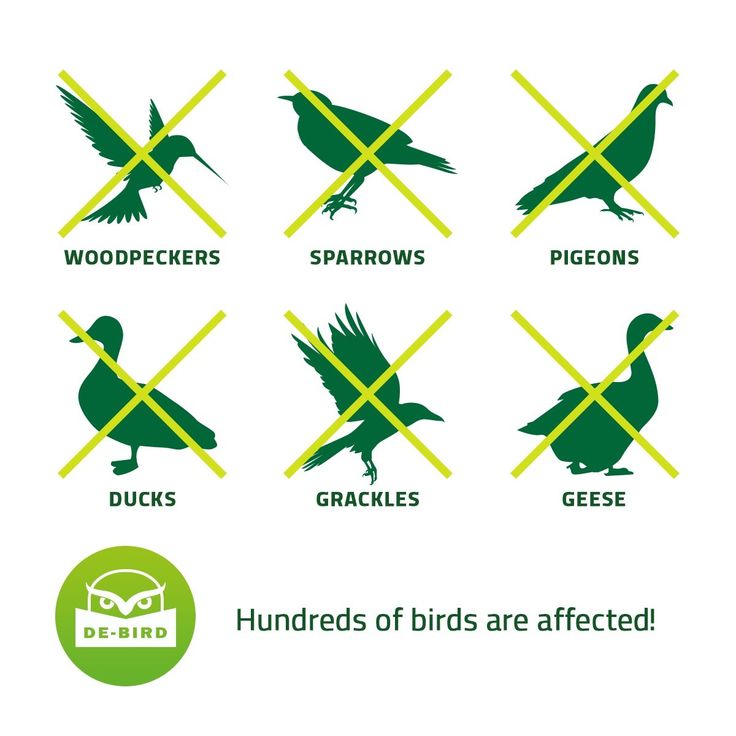 Favorable mixes include sunflower seeds, corn, millet, and wheat. If you have oak trees, the fallen acorns will also attract grackles.
Favorable mixes include sunflower seeds, corn, millet, and wheat. If you have oak trees, the fallen acorns will also attract grackles.
Since grackles are ground foragers, spreading birdseed in your yard will be more to their liking. Doing so will also encourage the birds to eat potentially unwelcomed insects and bugs. It may also discourage them from bullying other birds out of the feeders.
Our recommendation
Wagner's Black Oil Sunflower Seed
Check price on AmazonWhat do grackles not eat?
There is little that a grackle will not eat. In a way, they are nature's garbage disposal. However, if you are trying to discourage grackles from coming to your feeder, there are a couple potential solutions. Both involve offering seeds that grackles do not like, but other songbirds do.
The grackle seems to be deterred by safflower seeds, which are a favorite of nuthatches, cardinals, and chickadees. They also do not like nyjer and thistle seeds, commonly preferred by finches.
Grackle eating a spider on the ground
What do grackles drink?
Grackles drink water. For a long while, though, little was known about how grackles drink. They had never been observed drinking water like most birds. Yet, many had witnessed them dipping their food in shallow ponds and other water sources.
Thus, it was thought that these birds attained enough hydration through the food they ate. Until, at long last, grackles were observed drinking as other birds do - with their beaks.
Grackle drinking water from a bird bath
Do grackles feed from bird feeders?
Grackles will feed from bird feeders - sometimes as welcomed guests, other times they are rather unwelcomed. During migration seasons in the spring and fall, they often travel in large flocks, descending on feeders when they come across them.
These birds are large and can eat a feeder clean quite quickly. They may even bully smaller songbirds, discouraging them from coming to your feeders. However, if you have grackles traveling through during migration - or hanging around in winter causing a ruckus - you may be able to remedy it.
However, if you have grackles traveling through during migration - or hanging around in winter causing a ruckus - you may be able to remedy it.
Try supplying your feeders with the previously mentioned seeds that grackles do not like. If this does not work, spread plenty of birdseed out on the ground or ground feeders, away from your hanging feeders. Doing so may encourage the grackles to forage on the ground and leave other birds alone.
Our recommendation
Platform Ground Bird Feeder Tray (2 pack)
Check price on AmazonGrackle eating seed from a bird feeder in the back yard
Are grackles good birds to have around?
Grackles can be good birds to have around. They can also be a nuisance. When traveling in large flocks, they become unwanted pests for gardeners and farmers because they eat crops and livestock feed.
The grackle will also bully and sometimes kill other birds, making them unwelcome guests at many backyard feeders. However, they are not inherently bad apples. As previously mentioned, these birds also eat many insects that can be harmful to your crops and gardens.
However, they are not inherently bad apples. As previously mentioned, these birds also eat many insects that can be harmful to your crops and gardens.
If you enjoy bird watching, these characters have interesting behaviors to observe as well. It’s really up to you to decide whether or not grackles are good to have around.
Close up of a grackle at a bird feeder, feeding on a seed mix
Grackle Diet FAQs
Do Grackles Eat Other Birds?
Grackles occasionally eat other birds. They will also eat eggs and nestlings. Grackles are often painted in a bad light because of this behavior, but it is natural.
Do Grackles Eat Sparrows?
Grackles have been reported to kill and eat sparrows. They will also attack other songbirds up to the size of a thrush.
Do Grackles Eat Peanuts?
Grackles do eat peanuts, both in the shell and just the hearts.
Do Grackles Eat Sunflower Seeds?
Grackles eat sunflower seeds. These are among the bird's favorite meals, along with corn, acorns, and wheat.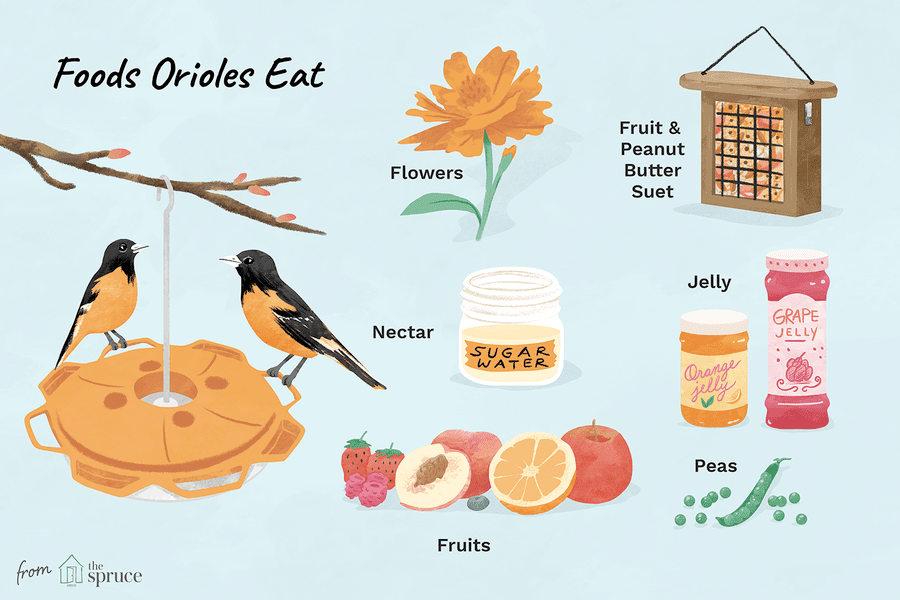
Enjoyed this content? Share it now
How to feed the found chick, how many times a day
If you find a chick, the first thing you need to do is determine its species. Feeding granivorous, insectivorous and predatory chicks have their own differences. But in the early stages of feeding, you can use the same feeding methods, and then, after finding out what kind of bird you found, transfer the chick to the appropriate feeding.
Here is one of the most common feeding options for granivorous and insectivorous chicks. This nutrient mixture is well used for feeding for chicks and fledglings from the passerine family. To prepare our mixture, we need the following products: Boiled egg, low-fat cottage cheese, raw carrots, meat (beef, chicken, turkey), greens (lettuce, dandelion leaves, wood lice), hamarus and daphnia, Calcium gluconate (shell from boiled eggs) glycerophosphate , children's dry dairy-free porridge or boiled millet (without salt and fat on the water).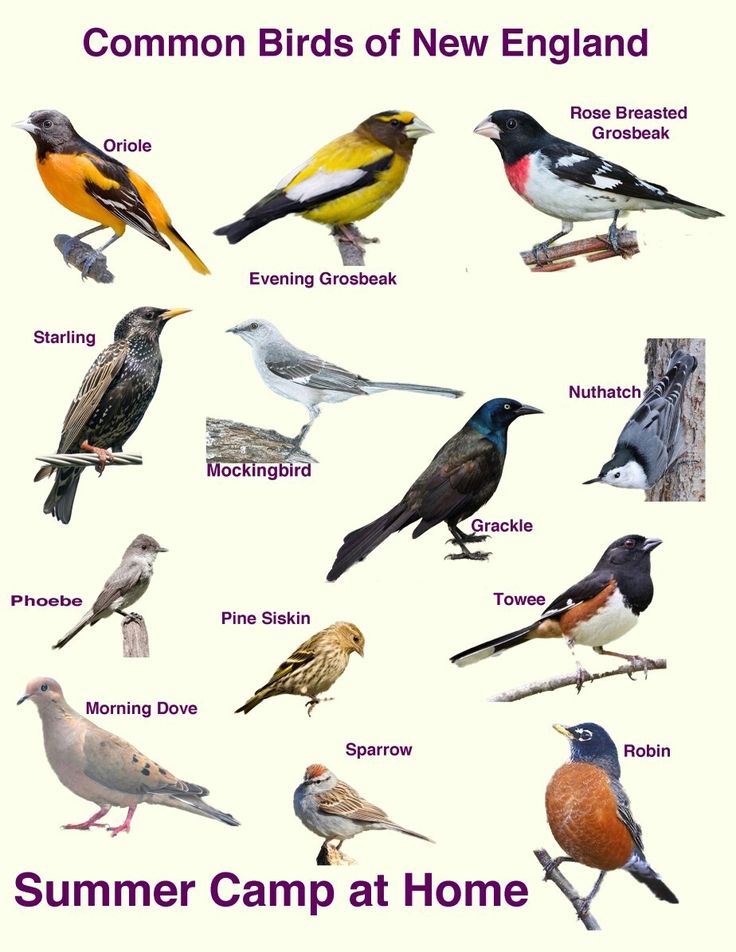
Action one. Boil the egg, free from the shell. We free the shell from the shell film. Grind the egg as much as possible, you can use a grater with small holes.
Second step. Boiled meat, it is better to take the pulp from the breast of a turkey or chicken and also chop or divide into fibers. The mixture will require meat 40 (for granivorous) and 60 grams (for insectivorous).
Third step. Take washed carrots of a small size, grate them on a fine grater, then squeeze the juice and we will use the remaining pulp.
Fourth step. We take not sour and not fatty cottage cheese. Cottage cheese should have 0% fat content, anything above is considered fat for poultry. We need 90-110 grams of cottage cheese. Sour cottage cheese must be boiled twice changing the water and then it will be suitable.
Step five. You can use greens to add the mixture, but you can do without it for the chicks. And so you can take the greens listed above, chop and add 1.5 teaspoons to the mixture.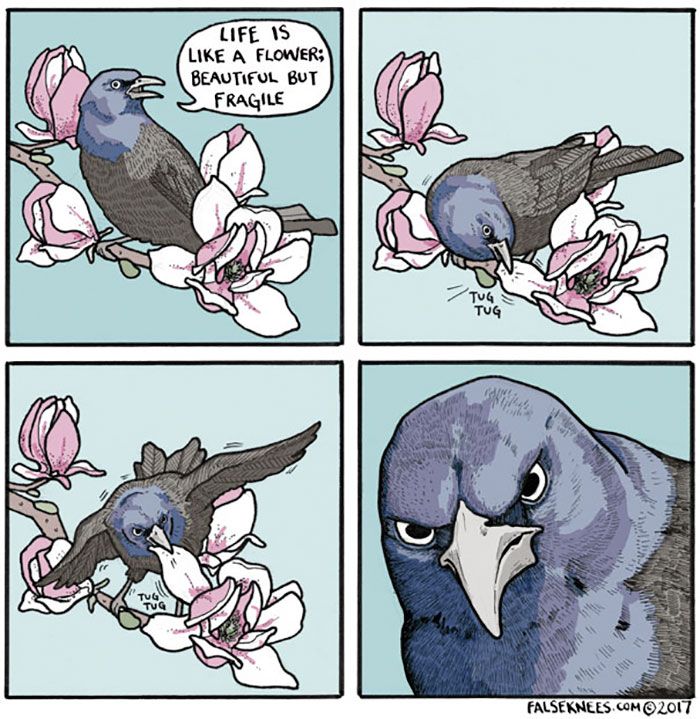
Action six. To the above ingredients, add 1.5 -2 tsp. dairy-free porridge or boiled millet (well boiled, without salt and fat in the water).
Step seven. To the mixture we add the shell from the boiled egg, which must first be ground in a coffee grinder, plus one fourth of the crushed tablet of glycerophosphate. If it is not possible to find glycerophosphate, then you can purchase bone meal and add one fourth tsp. in powder form. At the very least, the shells are enough for now.
Step eight. We take chopped hamarus and daphnia and add about 1 tsp to the resulting mixture. Then we mix everything, it turns out a very thick, crumbly porridge, it should not stick to the fingers. If the mixture is sticky, you can add dairy-free porridge or powdered cereals.
From the resulting mixture we roll small balls no larger than a small pea, focus on the size of the chick's beak. You can feed 2-5 balls at a time and after each feeding drink plain water from an insulin syringe with a removable needle (without a needle) 4-6 drops. A week-old chick should be fed every 1-1.5 hours, older than two weeks of age every 2-4 hours, at three and four weeks of age you can feed 3-4 times a day. Do not forget that the chick is growing and, accordingly, one-time portions of food are growing. A very important point, do not forget to warm the chicks, because at their age they themselves cannot maintain normal body temperature. Warming up promotes better assimilation of feed. Don't forget to control your chick's weight. If possible, show the chick to a specialist. To control the work of the intestines, you can take the litter from the chick for a coprogram, this is an analysis of the digestibility of the feed.
A week-old chick should be fed every 1-1.5 hours, older than two weeks of age every 2-4 hours, at three and four weeks of age you can feed 3-4 times a day. Do not forget that the chick is growing and, accordingly, one-time portions of food are growing. A very important point, do not forget to warm the chicks, because at their age they themselves cannot maintain normal body temperature. Warming up promotes better assimilation of feed. Don't forget to control your chick's weight. If possible, show the chick to a specialist. To control the work of the intestines, you can take the litter from the chick for a coprogram, this is an analysis of the digestibility of the feed.
Take care and love your feathered friends and they will love you back.
Veterinarian ornithologist
Chuguevsky VV
Veterinary clinic Bambi.
You can ask an ornithologist on the forum.
How to raise chickens: breeding tips.
How to raise chickens: tips for breeding.- +375 (33) 615-15-90
- +375 (29) 615-16-03
- Home
- Tips
- How to raise chickens?
Chicks for rearing should be chosen to be outwardly healthy. They quickly react to external stimuli, to sound, the fluff is uniform, shiny. The birds stand steadily on their feet, the stomach is taut, there are no signs of bleeding on the umbilical cord. It is not recommended to choose staggering chicks with a sluggish gait. Breeding young animals is an important stage in an effective poultry business. If the chicks were born under a hen, then additional heating is not necessary. The chicken itself creates the required temperature.
If chickens will be raised from an incubator, then a suitable place should be arranged for them in advance. The temperature regime is important for the healthy and active growth of young animals. If the temperature of the chicken coop is within the normal range, the chicks will be active, mobile. Under good conditions, they grow quickly, do not get sick. Do not make the temperature very high or low. In the first case, the chicks will try to move away from the heating source, they lose their appetite, they often drink water. And in the second case, they will shrink towards the heat source, and will also be inactive.
Under good conditions, they grow quickly, do not get sick. Do not make the temperature very high or low. In the first case, the chicks will try to move away from the heating source, they lose their appetite, they often drink water. And in the second case, they will shrink towards the heat source, and will also be inactive.
An easy way to maintain the optimal temperature is to use a regular heating pad that needs to be wrapped in a thick cloth. Water is changed to hot from time to time.
Growing conditions
Some poultry houses hatchery birds are grown in boxes that are covered with a cloth on top and do not include heating. It is absolutely impossible to do this, because the chickens will not have enough air and heat. With such content, they may die or grow poorly. Special boxes will be a suitable place, and light bulbs or reflectors will provide heating. So that in the first couple of days the chicks are not afraid of a heat source, it should be covered with a cardboard screen.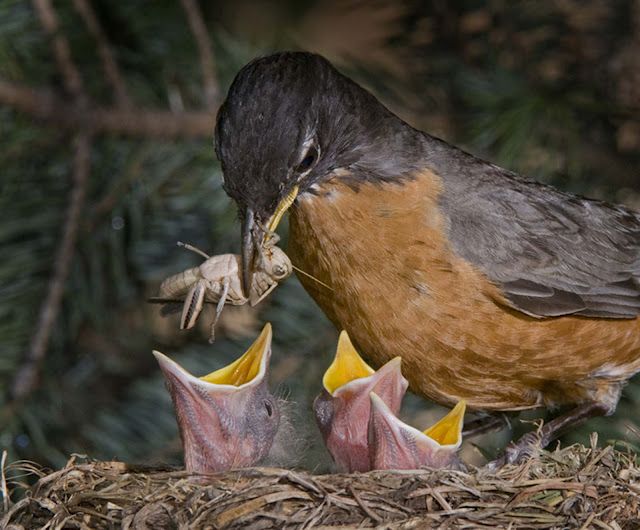 For the first 5 days in the chicken coop, the air temperature should be about 30 degrees. Then it is reduced to 26 degrees. Gradually, the temperature should be lowered to 16 degrees.
For the first 5 days in the chicken coop, the air temperature should be about 30 degrees. Then it is reduced to 26 degrees. Gradually, the temperature should be lowered to 16 degrees.
For harmonious, healthy development, chickens must walk in the fresh air. For this, it is better to choose warm weather without wind. UV will saturate the body with vitamin D.
Lighting
Lighting and warmth are equally important for the development of chicks. The light regime for growing chickens up to a week should be about 20 hours. For chicks from two months, about 10 hours of light will be enough. Thanks to such lighting, the activity of the chick increases, which leads to a good appetite. The chick will eat more often and grow faster.
Features of feeding chicks
The correct chick rearing regimen is impossible to imagine without balanced feeding. The ideal food for chickens is special food . You can easily choose the optimal composition for birds of any age. Chicks up to 5 days old are given cottage cheese and boiled eggs every two hours. The mixer is prepared from one egg or 50 grams of cottage cheese plus 50 grams of cereal. This is enough for 10 goals. It is also recommended to give hercules flakes mixed with milk powder.
Chicks up to 5 days old are given cottage cheese and boiled eggs every two hours. The mixer is prepared from one egg or 50 grams of cottage cheese plus 50 grams of cereal. This is enough for 10 goals. It is also recommended to give hercules flakes mixed with milk powder.
On the 3rd day of life, chopped parsley is included in the diet. Starting from 7 days, the birds are given a mash of yogurt or broth. 10 days - in addition to the marked products, you can give chopped pieces of fish or meat, as well as chopped carrots, zucchini, boiled potatoes. To strengthen the bones in the diet include crushed eggshells, chalk. If the birds are already 20 days old, then there are no dietary restrictions. They can give everything.
Chicken feed
In addition to self-prepared food, chickens can be fed prepared foods . High-quality feed is easily absorbed by the body of birds. Such food is given crushed and in a special way. Up to 10 days, food is given to the chicks in stages. The initial dose is about 10 grams. Over time, the figure increases to 35 grams. After 10 days of life of chickens, the norm is adjusted to 170 grams per head daily.
The initial dose is about 10 grams. Over time, the figure increases to 35 grams. After 10 days of life of chickens, the norm is adjusted to 170 grams per head daily.
What does ShM-Agro offer?
We are manufacturing and selling quality chicken feed . Modern production and high-quality raw materials make it possible to obtain an effective, useful product. The composition of Dzerzhinsky compound feed contains wheat and corn grains, meal and cake, fish oil and other natural ingredients. We do not use growth stimulants, antibiotics. During production, the raw material is subjected to steam treatment, due to which the finished feed becomes resistant to the formation of mold and parasites.
Similar articles:
Vitamins in poultry diet
The implementation of the metabolic processes of the body is impossible without such important substances as vitamins. They are the catalyst for all biological processes. Therefore, it is important to properly organize the nutrition of chickens with the inclusion of fortified feed.











